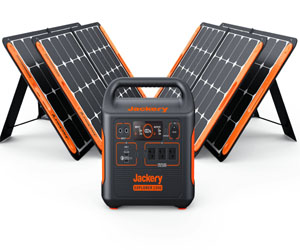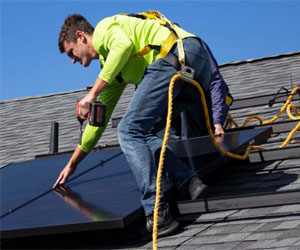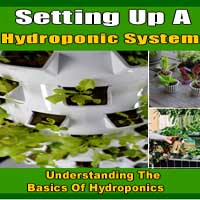


Paving The Way To A Sustainable Future

In a world facing growing environmental challenges, the need for eco-friendly transportation has become increasingly evident. Traditional modes of transportation, heavily reliant on fossil fuels, contribute significantly to air pollution, greenhouse gas emissions, and other environmental issues. As a result, the development and adoption of eco-friendly transportation options have become essential to combat climate change and create a more sustainable future.
1. Electric Vehicles (EVs): Electric vehicles have gained significant popularity as a greener alternative to traditional gasoline and diesel-powered cars. EVs run on electricity stored in rechargeable batteries, producing zero tailpipe emissions. The adoption of electric cars is on the rise, thanks to advancements in battery technology, extended driving ranges, and the expansion of charging infrastructure. EVs significantly reduce carbon emissions, air pollution, and dependence on fossil fuels.
2. Hybrid Vehicles: Hybrid vehicles combine traditional internal combustion engines with electric propulsion systems. These vehicles can operate on electric power at low speeds and switch to the internal combustion engine at higher speeds or when additional power is needed. Hybrid technology improves fuel efficiency and reduces emissions, making it an effective transition solution for those not yet ready to fully commit to electric vehicles.
3. Public Transportation: Efficient and eco-friendly public transportation systems, such as buses and trains, play a vital role in reducing the number of private vehicles on the road. Modern public transportation options often include electric or hybrid buses, which produce fewer emissions and offer a more sustainable means of moving people within urban areas.
4. Bicycles And Electric Bikes: Cycling and electric biking are eco-friendly, healthy, and efficient modes of transportation. These options produce zero emissions and promote physical activity, reducing the overall carbon footprint associated with commuting. Many cities worldwide are investing in cycling infrastructure to encourage this sustainable means of transportation.
5. Carpooling And Ridesharing: Carpooling and ridesharing services, whether through dedicated apps or informal arrangements, reduce the number of vehicles on the road and, consequently, traffic congestion and emissions. These services promote resource sharing and can be an economical and environmentally friendly way to travel.
6. Walking: Walking is the most eco-friendly mode of transportation and contributes to personal well-being while producing no emissions. Many urban planning initiatives aim to create pedestrian-friendly environments to encourage walking and reduce the need for motorized transportation.
7. Sustainable Urban Planning: Efforts to create eco-friendly transportation systems extend to urban planning and design. Cities worldwide are reimagining urban landscapes to prioritize public transportation, cycling infrastructure, and pedestrian pathways. Sustainable urban planning reduces the reliance on personal vehicles and lowers carbon emissions.
The shift toward eco-friendly transportation is a critical step in mitigating climate change and improving air quality. As the world grapples with the consequences of a high-carbon transportation sector, embracing eco-friendly alternatives becomes more important than ever.
Governments, industries, and individuals all have a role to play in the transition to eco-friendly transportation. This includes investing in research and development, incentivizing the adoption of cleaner vehicles, and making environmentally conscious choices in our daily commute. By collectively embracing eco-friendly transportation solutions, we can significantly reduce our carbon footprint, protect the environment, and build a more sustainable, healthier future for all.


Cleaning Your Home The Eco-Friendly Way
 Reduced Health Risks: Natural cleaning products are less likely to cause skin irritations, allergies, or other health problems associated with chemical exposure.
Reduced Health Risks: Natural cleaning products are less likely to cause skin irritations, allergies, or other health problems associated with chemical exposure.
Eco-Friendly: Natural cleaning solutions are gentle on the environment. They don't contribute to water pollution when washed down drains, and they reduce the production and disposal of harmful chemicals.
Versatility: Natural ingredients like vinegar, baking soda, and lemon juice can be used in a variety of cleaning tasks, reducing the need for multiple specialized cleaning products.
Common Natural Cleaning Solutions
Vinegar: White vinegar is a versatile natural cleaner that can be used to disinfect surfaces, remove stains, and even clean glass.
Baking Soda: Baking soda is an effective abrasive cleaner, perfect for scrubbing surfaces, deodorizing, and eliminating stains.
Lemon Juice: Lemon juice is a natural disinfectant that also leaves behind a fresh, citrus scent. It's great for cutting through grease and grime.
Essential Oils: Many essential oils, such as tea tree oil, lavender oil, and eucalyptus oil, have natural cleaning and disinfecting properties. They can be added to homemade cleaning solutions for added fragrance and antibacterial power.
The Power Of Smart Home Upgrades
 One of the primary advantages of smart home upgrades is the convenience they bring to our daily lives. Imagine being able to control your lights, thermostat, and even your coffee maker with a simple voice command or a tap on your smartphone. With the help of devices like smart speakers and home automation systems, you can create a truly interconnected living space. Adjusting your home's settings to suit your preferences has never been easier, making everyday tasks more efficient and enjoyable.
One of the primary advantages of smart home upgrades is the convenience they bring to our daily lives. Imagine being able to control your lights, thermostat, and even your coffee maker with a simple voice command or a tap on your smartphone. With the help of devices like smart speakers and home automation systems, you can create a truly interconnected living space. Adjusting your home's settings to suit your preferences has never been easier, making everyday tasks more efficient and enjoyable.
Security And Peace Of Mind
Smart home security is another major draw for homeowners. Advanced security systems equipped with cameras, motion sensors, and doorbell cameras provide real-time monitoring and alerts. This means you can keep a watchful eye on your property, whether you're at home or miles away. Smart locks also add an extra layer of security, allowing you to control access remotely and even provide temporary digital keys to guests.
Energy Efficiency
Smart home upgrades can significantly contribute to reducing your energy consumption and environmental footprint. Smart thermostats, for instance, can create personalized heating and cooling schedules that adapt to your daily routines, resulting in lower energy bills. Moreover, you can monitor and control your energy usage with the help of energy management systems, which offer insights into where and how you can save energy.
Customized Entertainment
Entertainment systems have also undergone a transformation with smart home upgrades. With a single remote control or voice command, you can manage your audio and video equipment, from smart TVs and streaming devices to home theater systems. Integration with virtual assistants like Alexa or Google Assistant allows you to effortlessly switch between your favorite movies, music, and more.
Bringing Sunshine To Your Home
 Permitting: Before installation can begin, you'll need to obtain the necessary permits and approvals from local authorities. Your solar installation company can assist you with this process.
Permitting: Before installation can begin, you'll need to obtain the necessary permits and approvals from local authorities. Your solar installation company can assist you with this process.
Installation: The solar panels and associated equipment, such as inverters and racking, are installed on your roof or property. The panels are securely mounted to ensure they can capture the maximum amount of sunlight.
Connection To The Grid: In many cases, residential solar systems are connected to the grid. This allows excess energy to be sent back to the grid in exchange for credits or compensation.
Testing And Inspection: Once the installation is complete, the system is thoroughly tested to ensure it's working correctly. Inspections may also be required to verify compliance with local regulations.
Monitoring And Maintenance: After installation, your solar system will be monitored to track its performance. Routine maintenance, such as cleaning the panels and checking for any issues, will be necessary to keep the system running efficiently.
Benefits Of Solar Installation
Reduced Energy Bills: Solar installation can significantly reduce your electricity bills. By generating your electricity from sunlight, you'll rely less on traditional utility providers.
Environmental Benefits: Solar power is a clean and renewable energy source. It reduces your carbon footprint and helps combat climate change.
Energy Independence: Solar installation provides a degree of energy independence. You're less reliant on the grid, which can be particularly beneficial during power outages.
Increased Property Value: Homes with solar panels are often more attractive to buyers, potentially increasing your property's value.






Keeping Your Garden Beautiful And Healthy
 Preventative Measures:
Preventative Measures:
The first step in effective weed management is prevention. Here are some strategies to consider:
Mulching: Apply a layer of organic mulch to your garden beds. Mulch not only conserves soil moisture and regulates temperature but also suppresses weed growth by blocking out sunlight.
Landscape Fabric: Landscape fabric or weed barrier cloth can be placed under mulch to provide an extra layer of weed control. It allows water to pass through while inhibiting weed growth.
Plant Density: Plant your garden densely to create competition for sunlight and nutrients, leaving less room for weeds to take hold.
Regular Inspection: Routinely inspect your garden for early signs of weeds. It's much easier to deal with a few weeds when they're small than to tackle a full-blown infestation.
A Fundamental Right And Social Imperative
 One of the critical challenges in addressing affordable housing is the ever-increasing demand. As more people move to urban centers in search of better economic opportunities, housing markets become strained. Limited supply and increasing demand often result in skyrocketing housing prices, pushing the cost of living beyond the means of many.
One of the critical challenges in addressing affordable housing is the ever-increasing demand. As more people move to urban centers in search of better economic opportunities, housing markets become strained. Limited supply and increasing demand often result in skyrocketing housing prices, pushing the cost of living beyond the means of many.
The consequences of unaffordable housing are far-reaching. Families are forced to live in overcrowded and substandard conditions, leading to health issues and reduced quality of life. Homelessness becomes a tragic reality for some, further exacerbating social problems. Moreover, the lack of affordable housing can perpetuate cycles of poverty, as families are left with limited resources for education, healthcare, and other essential services.
Affordable housing solutions are not only vital for individuals and families; they also have broader social and economic implications. Access to affordable housing can improve community stability, enhance economic mobility, and reduce the burden on social welfare programs. By ensuring that everyone has a place to call home, we create the foundation for stronger, more inclusive societies.
To address the affordable housing crisis, various approaches and strategies are being employed around the world. Government subsidies, tax incentives, and grants can stimulate the construction of affordable housing units. Public-private partnerships are another effective way to harness the resources and expertise of both sectors. Community land trusts and co-housing initiatives offer innovative models for affordable housing, empowering communities to take ownership of their housing solutions.